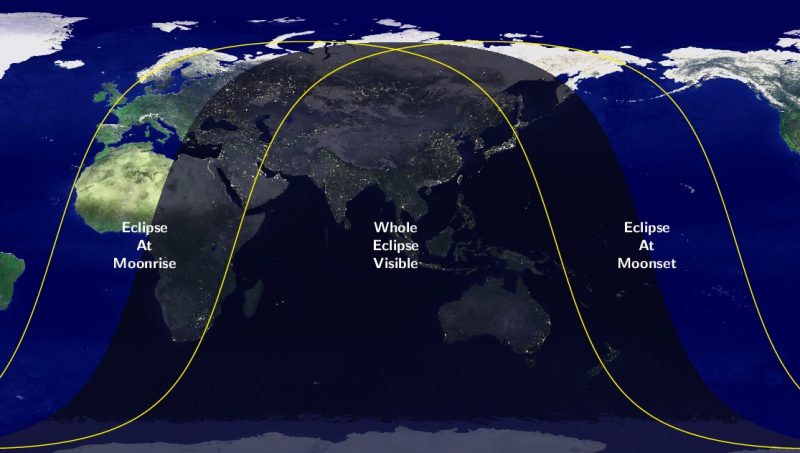
Penumbral lunar eclipse
People in eastern Europe, the Middle East, Africa, Asia, Australia, New Zealand, Antarctica, the South Atlantic Ocean, the Indian Ocean and the Pacific Ocean will see a deep penumbral lunar eclipse during the night of May 5-6, 2023.
Penumbral eclipse begins at 15:13 UTC on May 5. That is 11:13 a.m. EDT in North America, and the moon isn’t up at that time. That’s why this eclipse is not visible from the Americas.
Greatest eclipse is at 17:22 UTC on May 5 with a penumbral magnitude of 0.9655. In other words, at greatest eclipse, nearly all of the moon will be inside the Earth’s outer penumbral shadow. The moon will never go into Earth’s darker umbral shadow. So it will never seem as if a dark bite has been taken out of the moon. Instead, it’ll be a subtle darkened shading on the moon, and, at mid-eclipse, only a small sliver of the moon will fall outside this dark shading.
Penumbral eclipse ends at 19:31 UTC on May 5 (3:31 p.m. EDT).
Duration of eclipse: This is a deep penumbral lunar eclipse with a duration of 258 minutes.
Note: A penumbral lunar eclipse is the most subtle kind of lunar eclipse, one that most people won’t even notice. The moon’s shadow won’t be detected until the disk of the moon is immersed in about 2/3 of the penumbral shadow. Of course, this depends on the atmospheric conditions and a person’s visual acuity.
The full moon and eclipses
If this full moon were truly opposite the sun, there’d be a total umbral eclipse of the moon. That is, the darkest part of Earth’s shadow – the umbra – would cover the moon at mid-eclipse. But this full moon in May sweeps to the south of the Earth’s umbra. So no total or partial lunar eclipse in the Earth’s dark shadow can take place.
Instead, the full moon almost fully passes through the Earth’s penumbral shadow. So it’s a very deep penumbral eclipse. At no time will Earth’s dark shadow take a “bite” out of the moon. Instead, penumbral eclipses are all about subtle shadings.
Tonight’s penumbral lunar eclipse occurs when the moon is in the constellation of Libra the Scales.
Find the moon’s path with respect to Earth’s umbral and penumbral shadows below.
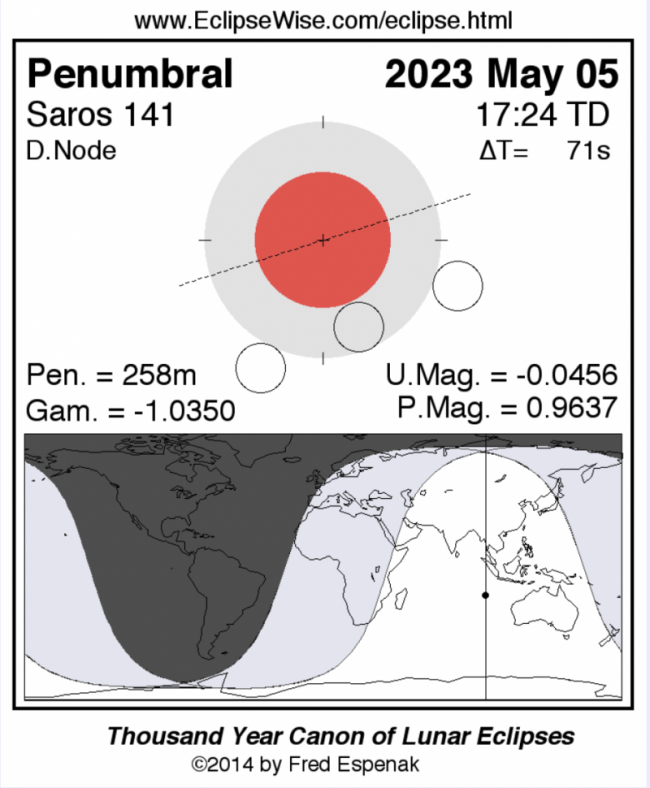
Visit Timeanddate.com to get an exact timing of the eclipse from your location.
Eclipses in 2023
Tonight’s penumbral lunar eclipse is preceded two weeks earlier by a hybrid solar eclipse on April 20, 2023. The fact is, these two eclipses take place within a single eclipse season.
An eclipse season is an approximate 35-day period during which it’s inevitable for at least two (and possibly three) eclipses to take place.
Then later this year, the October 2023 eclipse season will feature a annular solar eclipse on October 14, 2023, and a very shallow partial lunar eclipse on October 28, 2023.
Maps and data for the total lunar eclipse
- Visual Appearance of Lunar Eclipses
- Danjon Scale of Lunar Eclipse Brightness
- May 5-6, 2023, eclipse map and animation
Visit Timeanddate.com to get an exact timing of the eclipse from your location.
Penumbral lunar eclipse photos from our EarthSky community
Submit your photo to EarthSky here.
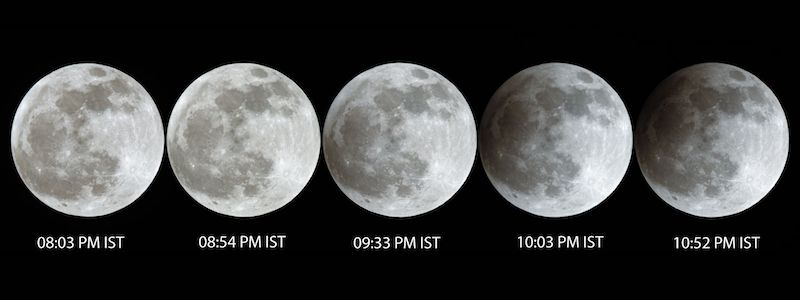
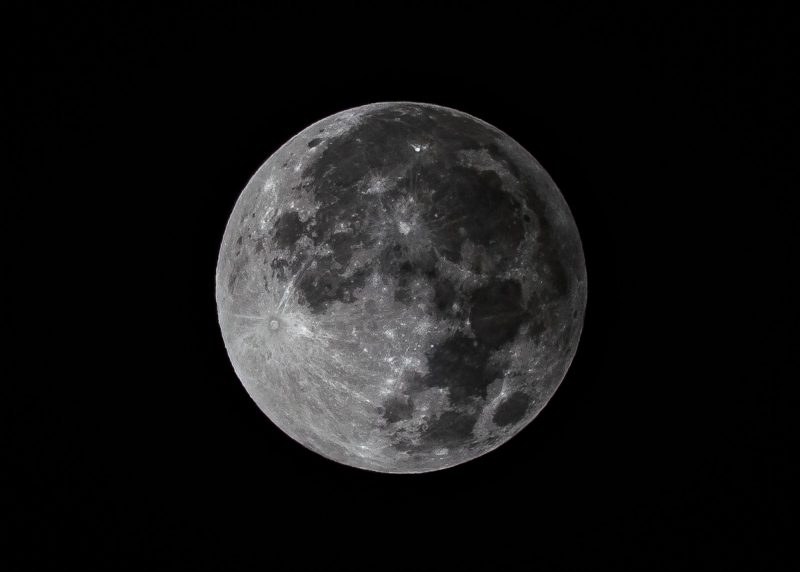
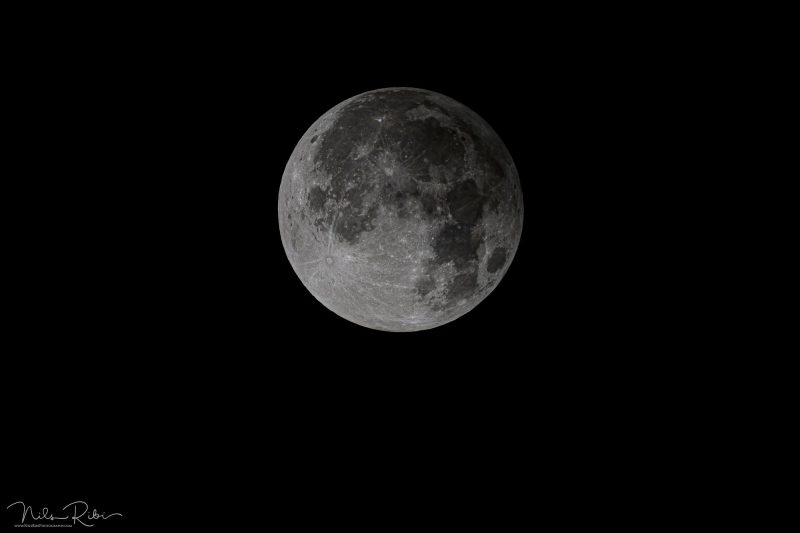
More resources
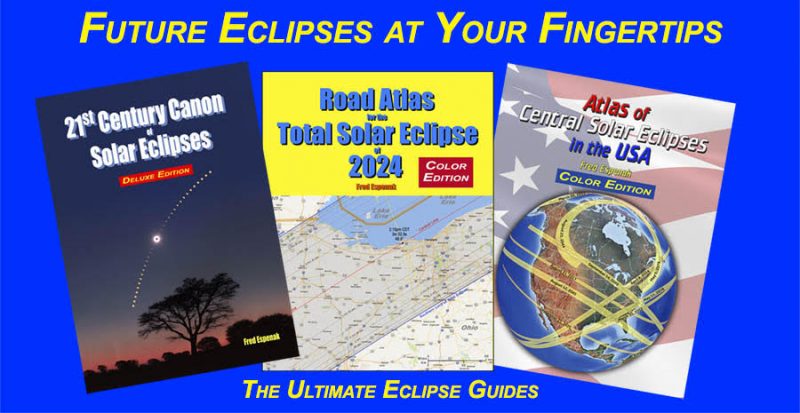
Bottom line: A penumbral lunar eclipse – lasting over four hours – happens overnight tonight. It’s visible from eastern Europe, Africa, Asia, Australia, New Zealand, Antarctica and Indonesia.
Visit Timeanddate.com to get an exact timing of the eclipse from your location.
EarthSky’s monthly night sky guide: Visible planets and more











